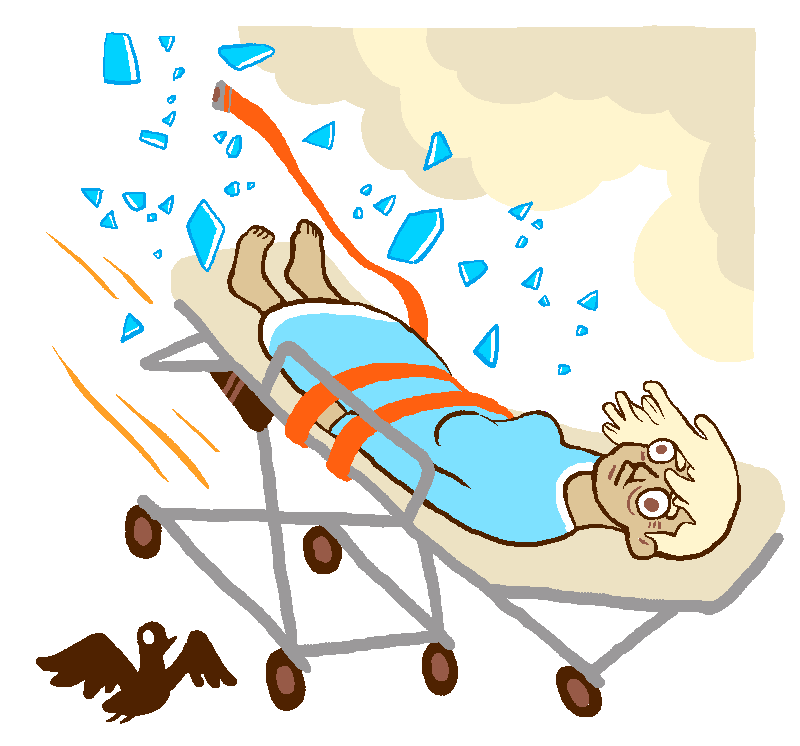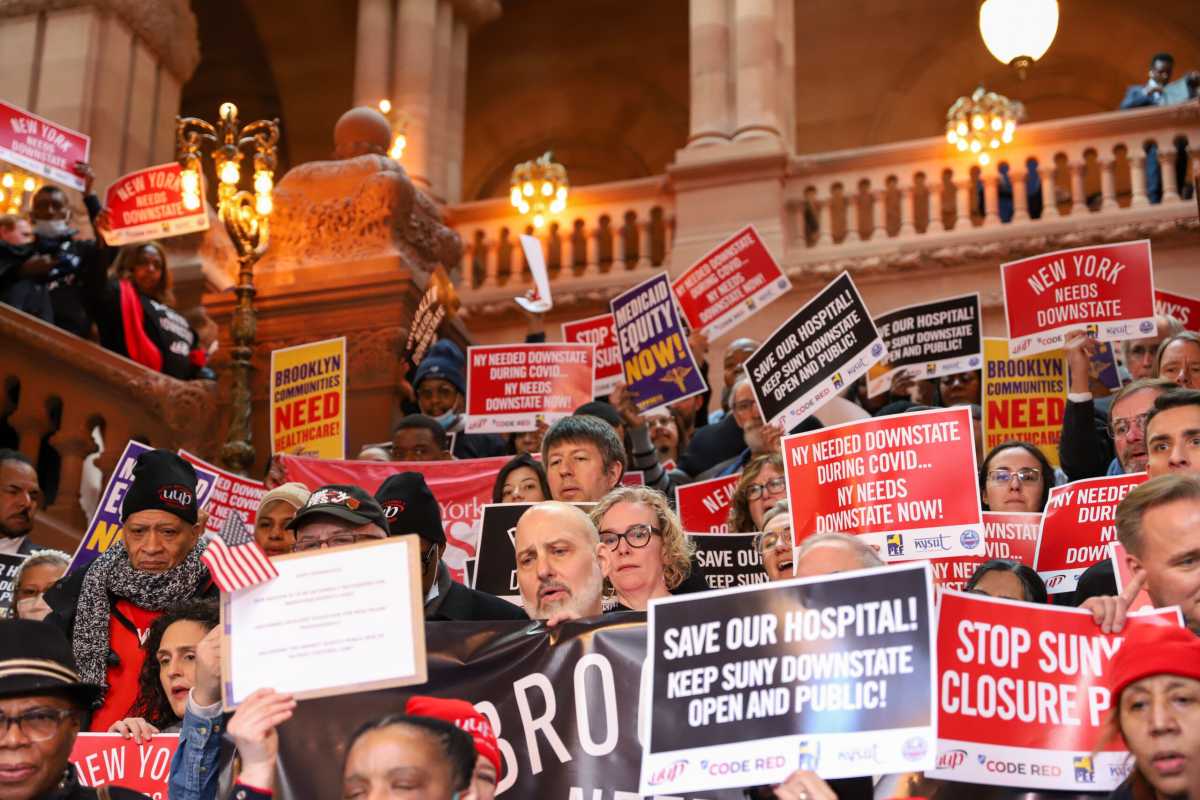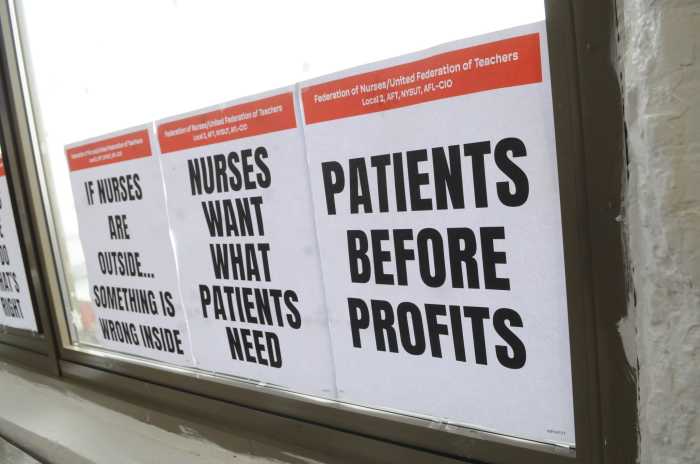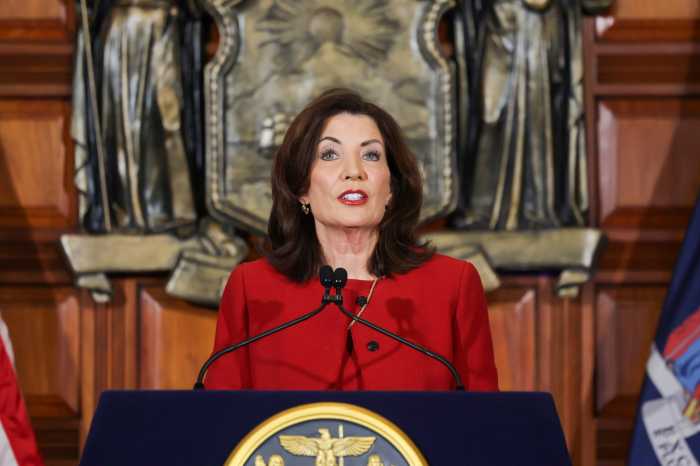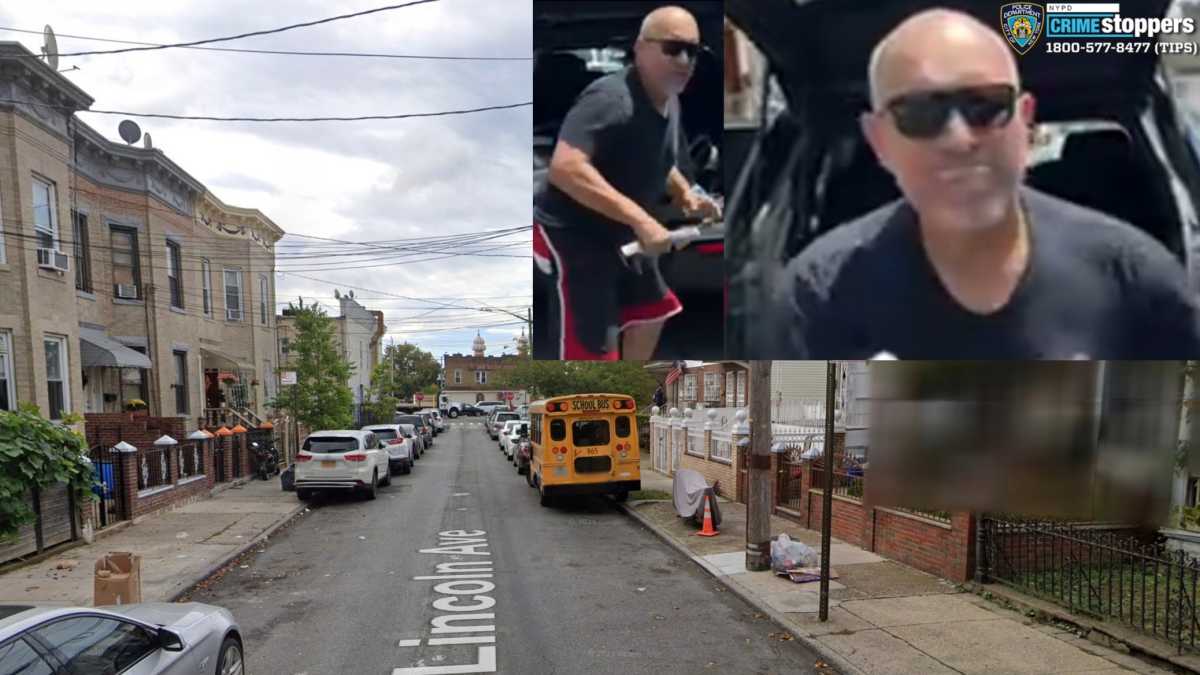The United University Professions (UUP) union was at the state capitol on Tuesday rallying to keep SUNY Downstate Hospital open amid imminent closure.
UUP, the nation’s largest higher education union, was joined by elected officials from across New York City as well as leaders from numerous statewide unions like the American Federation for Teachers, New York State United Teachers and Public Employees Federation in their calls to Governor Kathy Hochul and SUNY’s Chancellor John B. King Jr. to stop plans to close the hospital.
SUNY Downstate is the only state-run hospital in New York City and serves a large community in Brooklyn, many of whom are low-income residents and people of color. After years of underfunding coupled with structural issues, Governor Hochul and SUNY in January announced a “transformative” plan to establish a path to improve the institution and build a more sustainable and healthy future.
While the plan includes $300 million in capital investments, it would also relocate staff and patients to other nearby hospitals like NYC Health + Hospitals/Kings County to continue care, shuttering the current SUNY Downstate medical campus.
SUNY officials stressed that allowing SUNY Downstate to continue operating at its current status quo of financial and facility turmoil would not improve the health outcomes of the community and that it was imperative to implement institutional improvements so the medical center could better serve its patients.
“Fewer than half of the hospital’s available beds are in use on a regular basis, and Downstate’s hospital faces an infrastructure crisis and due to its age routinely floods, has temperature control issues, and many other limitations,” King Jr. said in a statement in January. “We cannot allow this status quo to continue. SUNY will put forward a plan for Downstate transformation that empowers the university to fulfill its mission for the future.”
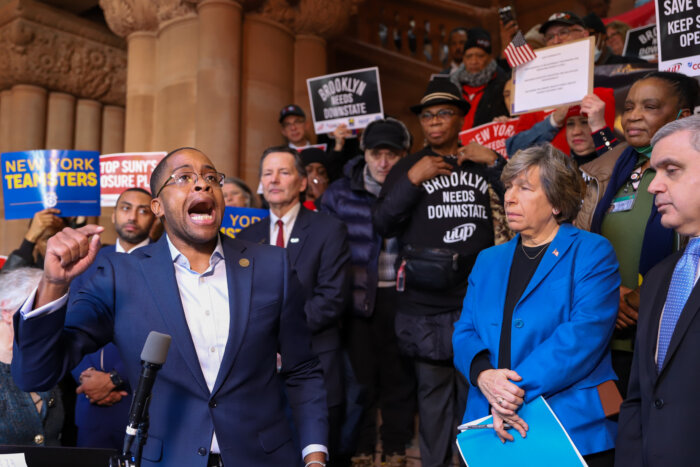
About 90% of SUNY Downstate’s patients are Medicaid recipients, underinsured or completely without insurance. The hospital is also currently the only medical facility in Brooklyn with a kidney transplant program, leaving the future of Brooklynites who depend on specialized care hanging in the balance if the facility closes.
“Closing Downstate means fewer slots for medical school students, fewer graduates to fill crucial positions at hospitals across the state, and less access to health care services for some of our most vulnerable populations in Brooklyn,” said UUP president Fred Kowal at the Feb. 6 rally in Albany. “You don’t solve a public health crisis by closing a hospital. It is the exact opposite of what we should be doing. Gov. Hochul has the opportunity to change the repugnant pattern of disinvestment we’ve seen by the prior administration and support the future of our Brooklyn community.”
According to an individual familiar with recent stakeholder briefings, the new ‘transformative plan’ would see potential workforce reductions of 10 to 20 percent among the hospital’s 1,725 staffers represented by the UUP. There are currently about 2,000 employees at Downstate, with the hospital currently funding approximately 750 employees at the campus, of which 460 are represented by UUP.
The individual clarified that Downstate was not anticipating any job losses from campus staff, only hospital staff of which there are 1,265 full time UUP hospital employees and 460 partially funded by the hospital.
Even before news of Downstate’s closure broke, Brooklyn was beleaguered with issues of healthcare inequity. According to a city healthcare disparity report released on Feb. 1, Brooklyn communities with higher Black and Latino populations have over 20% fewer healthcare professionals per capita in crucial healthcare areas like primary care, pediatric care and women’s health.
Of the 57 pregnancy-associated deaths recorded throughout NYC in 2019, 20 were in Brooklyn and 80.7% of those deaths were of Black and Latinx patients.
“Hospital closures have dire consequences for our state, particularly in low-income communities and communities of color which already have fewer hospital beds and face glaring healthcare inequities,” said George Gresham, president of 1199SEIU. “With New York sitting on nearly $50 billion in reserves, there is simply no reason why we should be facing a healthcare emergency. Governor Hochul must pass a budget that saves hospitals by ending the Medicaid underpayments that are a root cause of this crisis.”
Local elected officials, including State Senator Zellnor Myrie, joined healthcare workers and union leaders in Albany by demanding SUNY Downstate remain open so his constituents could continue to receive care.
“SUNY Downstate has been there for us — in the darkest days of COVID and in our most vulnerable moments,” said Myrie, who represents a swath of Central Brooklyn including parts of Crown Heights, East Flatbush, Park Slope, Prospect Heights, Prospect Lefferts Gardens and Windsor Terrace. “Yet after decades of disinvestment and neglect, the Governor and SUNY are proposing a plan that would shutter this hospital and worsen the deep racial and economic disparities in access to care. Now it’s our turn to be there to support Downstate. We stand united against any plan that reduces care in Central Brooklyn.”
Assembly Member Latrice Walker, a member of the assembly’s task force on women’s issues, also strongly condemned the decision to close SUNY Downstate.
“The closure of SUNY Downstate would have the greatest impact on people of color in neighborhoods with the highest concentration of poverty in all of Brooklyn,” Walker said Tuesday. “And I, for one, just can’t sit idly by and let entire communities, a workforce and nearby businesses suffer. I just can’t do it. The New York State Department of Health issued a report last week that detailed the inequities that already exist in health care in Brooklyn. The findings were alarming. The data found that residents in Brooklyn, especially low-income residents and people of color, have poor access to health care services. Closing SUNY Downstate Hospital will not increase access to services. It will make it worse.”
Another major part of the “transformative plan” is a community envisioning and engagement process to include the public in major decision-making steps for SUNY Downstate’s future in regards to the $300 million investment.
“SUNY is committed to working with elected officials and community members to develop a plan for Downstate that secures the future of our health sciences university, preserves current levels of care in the community, and expands access to desperately needed outpatient and ambulatory services,” the spokesperson told Brooklyn Paper on Wednesday. “SUNY is beginning a community engagement process including a survey of Downstate students, alumni, faculty staff and patients and community stakeholders. We will hold five focus groups that will engage those impacted across the university and the Central Brooklyn community. The process will begin with a needs assessment to better understand stakeholders’ perspective on the current state of affairs at SUNY Downstate’s health sciences university and teaching hospital, followed by a visioning process to ensure that community-sourced ideas inform SUNY’s plan for a stronger Downstate at all levels.”
SUNY Downstate President Dr. Wayne J. Riley added that the community engagement process would focus on ensuring that including stakeholders and their interests remain a top priority.
“This is a new chapter for Downstate, one filled with challenges and opportunities,” SUNY Downstate President Dr. Wayne J. Riley said on Wednesday. “Our community’s input in shaping the transformation process will help us build a sustainable, vibrant future for this essential institution.”


